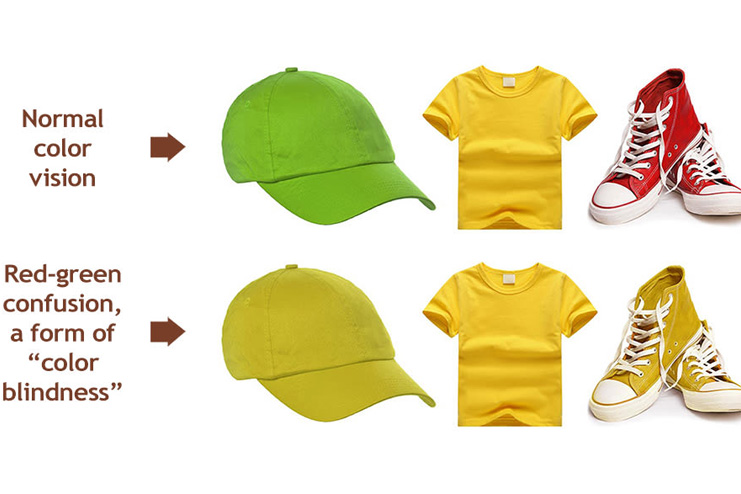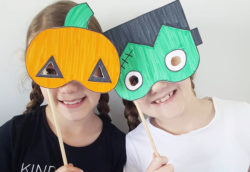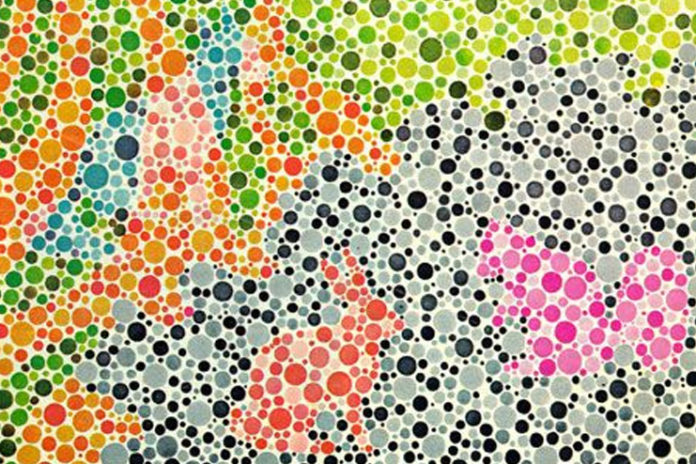The ability to see the nature and colors is gifted to everyone right from the birth. Color vision is more important for every human being as it provides the sensory information about their environment but some may encounter the problem associated with the color vision known as color blindness. This article helps you to know what exactly the color blindness.
Being able to see and identify the color is the art of appreciating environment that we have gifted by birth. This could be a challenging for some children as they might not be able to see the things like others. Understanding this will help you to assist your child in coping with the challenges of color vision deficiency. Scroll down to know the diagnosis, treatment and challenges of color blindness.
What is color blindness in children?
Color blindness is a condition where your children can not see some colors which is also known as color vision deficiency. Children with this deficiency may have the difficulty in differentiating the shades of various colors. This usually happens between green, red, and occasionally blue colors.
Development of color vision in children:
Newborn baby does not have the proper vision in the early stages of their life. They can’t see the colors and can only see the objects within very short distance. Babies completely develop their color vision at the age of 6 months.
Children start to match the colors at the age of 2 years. For example they could be able to give you the object of the same color that you are holding. At this age they can not be able to tell the name of color. At the age of 3 years, children start to name the colors of the main colors. Children will take two more years to name all the colors exactly.
Causes of Color Blindness:
Before knowing the causes of the color blindness, you should know the more important elements that are responsible for the vision.
All the cells and nerve pathways are present from the moment you are born. Two types of cells exist in the retina and at the black of the eye called cone cells and rod cells. Rod cells, being sensitive to the light, help us to see the things around us at the night in the shades of black, grey, and white.
Cone cells react to the light and help us to see the object in detail. They also support the color vision. There are three types of cones which respond to long, medium, and short wavelengths of the light.
Here are the causes of the color blindness in the children:
● Genetic changes may make the kids to encounter the missing or lack in the functionality of one or more type of these cone cells resulting in the altering of the response to various colors.
● There are some types of color vision defects that result from the chronic illness, accidents, chemicals, or medication.
● Color blindness may occur with the aging when the retinal cells are damaged by the aging processes.
Types of color blindness:

Color blindness is classified into three types. They are:
1. Red green color blindness: This is the most common type of the blindness. This occurs when your kids have trouble recognizing the difference between green, brown, red, and oranges.
Reduced sensitivity to red color occurs due to the missing or the defective L-cones. Reduced sensitivity to the green light occurs due to the missing or the defective M-cones.
2. Blue yellow color blindness: children who encounter with this kind of problem may have the difficulty in distinguishing the difference between blue and yellow. Absence or weakening of the S cones results in this condition
3. Total Color blindness: There are some people who cannot recognize any color for them the entire world is like a black and white movie. This condition is known as monochromacy which occurs due to the non functioning or absence of retinal cones. It is a rare conditions and happens for 1 in 33,000 people.
Why to test the color blindness in the children?
Here are a few reasons why you should test for color blindness in your child:
● If your child has color blindness, they might see the colors like red, green, brown, and orange as the same.
● It is more important to make your child’s teacher aware of your child’s color blindness so that they can help them cope well with the disabilities of your child.
● You will come to understand the problem with your child and can help them in a proper manner.
● If you know the color blindness of your child, you can also make your kid’s friends understand and help your child.
Testing your child for the color blindness very soon may not yield the good results because of the following reasons:
● Before kindergarten age, children might not develop the color naming abilities.
● It is not good to push them hard on the things like color vision. Give your child some time to learn the concept of color vision.
● Don’t go yourself wrong while diagnosing the color blindness in your child.
● Understand your child and help them better to cope up well the color blindness
It won’t really help your child to know their defect in the early stages
When to test your child for color blindness?
Testing toddler color blindness may not yield good results when tested early because, Color vision and the color naming start to evolve slowly as the children grow. Many parents have the doubt that when to test for the color blindness in the child.
You should for color blindness in your child, if you recognize any possible evidence of color vision deficiency in your child. It may not help you because the color deficiency test might sometimes show you the negative results though your child doesn’t have it.
Signs and symptoms of color blindness in children:

The major sign of the color blindness in your child is the inability to distinguish colors and making mistakes while identifying them.
Here are a few other symptoms that the parents can recognize in the children with color blindness:
● Using the wrong colors and using the dark colors inappropriately.
● You may notice the low attention span in your child while coloring the work sheets.
● Denial of color issues
● Unable to identify the pencils in the colors of red or green or its composition. This is one of the early signs of color blindness in toddlers.
● Identification of colors may worse under the poor light.
● These kids smell the food before eating and they are likely to have the excellent sense of smell.
● They are more sensitive to the bright lights
● Children often complain about the hurting of the eyes and head when they look at something in red with green background or vice versa.
● Children tend to move their eyes unconsciously.
Diagnosis of color vision deficiency in children:
It is more important for the children to have the regular color vision diagnosis for the children.
Color vision testing can be done by the eye specialist by using the specially designed charts. Some school health services will also be able to test your baby’s color vision deficiency.
If the color vision deficiency is confirmed, further test is required to tell what kind of deficiency it is. Color deficiency is quite common and may have the impact on the child’s long-term health.
If you notice any evidence of color vision deficiency in your child, you should give them a test before they enter the kindergarten.
● EnChroma, the leader of the color vision technology provides self-administered color blindness test online. This website has age specific tests. The test results indicate the type and severity of the color blindness. When testing the child as young as 5 years old follow these steps:
● Select a time of the day at which your child is more alert as they have to pay the attention for at least up to 5 minutes without distractions.
● Seat your child comfortably so that they get direct view of the computer screen. Ensure that they look straight at the screen and not from any other angle. As off the axis view may adversely affect the test results.
● Ensure that the brightness should not be washed off away by the sunlight or lighting from the other rooms.
● You can help your kid in driving the mouse whenever it is required.
Treatment for the color blindness in toddlers:

There is no treatment to cure the color vision deficiency. Many people with the color vision deficiency could be able to understand that they have certain limitations. Some people may not be able to recognize that they have color blindness till they become adults.
Taking the cues from others or using the visual cues that do not rely on the color will help them manage their color blindness. Many mobile apps are available that assist in the color identification.
If you child has does not have any other complaints about the color blindness and suddenly been unable to identify them accurately, then schedule the visit with the doctor. The issue may be due to the eye infection and full range of color vision can be restored once the infection is treated effectively.
Color perception can be enhanced by the use of filters which are available in the form of contact lens or eye glass form. The invention of EnChroma glasses has given some hope for the people with color blindness. Studies found that these glasses are effective and helping the people to be able to see the new colors or even correct color vision deficiency (CVD).
How to help colorblind child?
The only thing that you can do for your color blind child is maintaining the sense of humour with your child. If you know that they can not identify or tell the difference between some colors, don’t try to make a big deal out of it. Here are a few tips that you can do to help your child cope with the color blindness:
● Make sure that the people who work with your child know that they can not tell the difference between some colors.
● Ask your child’s teacher to help your child with the colorblindness by avoiding the use of color coding in test sheets, exercises and marking.
● Learn to understand how your child sees the world.
● Don’t be surprised about the bad color taste in your child and help them in matching the pieces.
● Every color blinded person may have their own strategy to cope with their colorblindness. Make your child to read some books like All About Color Blindness, Erik the Red sees Green, Seeing Color: It’s My Rainbow, Too, and Just Like Grandpa and help them to develop their own strategy.
Challenges of the color blindness:
Color recognition plays a primary role in our daily lives and help us to separate the things and appreciate the art of nature. Varying degrees of the color deficiency exist. Color vision ability can be affected by the degree of intensity of the light and the size of the object.
If the people are not able to recognize the colors, they have to rely on the cues. For example, a person may be able to tell the red or green traffic lights by their position.
Here are a few challenges that the children with the color blindness face in the later part of their life:
1. Driving and color vision deficiency:
People with red-green color deficiency can get a car or motor cycle license. They can also get a commercial driver license. People with the reduced contrast sensitivity are given the license with certain restriction like they are not allowed to drive at night.
2. Occupation and the color vision deficiency:
People with color vision deficiency are not allowed to take certain roles where the reliable color recognition is required.
Problems may also arise even in the simplest form of daily activities including choosing, driving a car, preparing food, gardening, and selecting clothes to wear.
What teachers can do?
It is more important to make your kid’s teacher know the color blindness of your child so that you can clear the obstacles in the pathway of your child’s learning.
● Here are a few things that the teachers can do to help the children with the color blindness:
● Instead of using the colors, they can write in black on a white board.
● Making the handouts of black and white contrast, instead of using the colored ones.
● To mention anything relevant to the instruction, write down the name of the color.
● Make sure that the art supplies with the color should be labelled properly.
In conclusion, support and motivate your child and don’t make the color blindness a reason for them to lack in the life skills. Technology combined with your guidance and support can make everything possible and help your child to cope well.







































